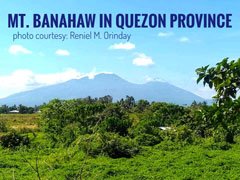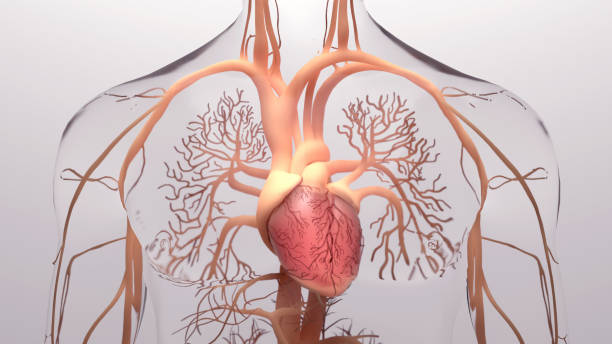What is an ecosystem?
An ecosystem is an environment made up of living things and their physical surroundings. The living things in an ecosystem interact with each other and with their environment to create a complex web of relationships. An ecosystem can be as small as a puddle or as large as an ocean.
Ecosystems can be classified according to the type of living things they contain. Aquatic ecosystems, for example, are water-based and include ponds, lakes, streams, rivers, and oceans. Terrestrial ecosystems are land-based and include forests, prairies, deserts, and tundra.
Ecosystems are also classified according to the type of energy they use. producers, such as plants, convert sunlight into chemical energy that they use to produce food. Consumers, such as animals, eat producer organisms or other consumers.

What are ecosystems and why are they important?
Ecosystems are important because they provide essential services that are necessary for human survival and well-being. Ecosystems provide food, clean air, and water, regulate climate, support plant and animal life, and offer opportunities for recreation and cultural enrichment.
Ecosystems are also important because they play a critical role in the global economy. They help to purify water and air, stabilize soils, reduce flooding, and support fisheries and forestry. In addition, they are a source of pharmaceuticals and other commercially valuable products.
Ecosystems are under threat from a variety of human activities such as land development, pollution, overexploitation of resources, climate change, and invasive species. It is important to protect these valuable natural resources so that future generations can enjoy their benefits.

Elements of an Ecosystem: What are the main components of an ecosystem?
An ecosystem is made up of different parts, which all work together to create a balanced and healthy environment. The main components of an ecosystem are the abiotic factors and the biotic factors.
The abiotic factors are the non-living things in an ecosystem, such as water, sunlight, and air. These factors play a very important role in the health of an ecosystem, as they provide the necessary resources for plants and animals to live.
The biotic factors are the living things in an ecosystem, such as plants and animals. These organisms interact with each other and with their environment to create a complex web of relationships. Each organism in an ecosystem has an important role to play in maintaining balance.

Food Webs: How do different species interact in an ecosystem?
In ecology, a food web (FW) is a network of food chains in an ecosystem. A food chain links a trophic level to the next one up in the hierarchy. The first trophic level is made up of primary producers, such as plants. The second trophic level is made up of herbivores that eat the plants. The third trophic level is made up of carnivores that eat the herbivores. And so on. The different species in an ecosystem interact with each other in many ways. One way they interact is through their diets. Species at different levels in a food chain eat different things. For example, plants are eaten by herbivores, which are eaten by carnivores, which are eaten by apex predators. Another way species interact is through competition for resources. For example, a plant population may be limited by the amount of sunlight that it receives. If there are more plants, then they will compete with each other for the limited amount of sunlight. Therefore, these plants may not survive and their populations will decrease. This is called competition.
Another way species interact is through predation. In this situation, one species will kill another for food. This is called predation. For example, animals that eat plants may be predators of those plants.
Another way species interact is through parasitism. These are organisms that live on other organisms. For example, aphids are parasites of plants. They feed off the plants using the energy from photosynthesis. Aphids use their sucking mouth parts to pierce the plant and feed off of its nutritious juices.
Energy and Nutrient Cycling: How do energy and nutrients move through ecosystems?
One of the most important aspects of ecology is understanding how energy and nutrients move through ecosystems. This cycling of resources is what allows life to thrive on Earth. Energy, in the form of sunlight, is necessary for all life processes. Plants use sunlight to produce food through photosynthesis. This food provides the energy that animals need to survive. Animals eat plants or other animals, and the nutrients from those foods are then passed along to the next level in the food chain. This process continues until the energy dissipates into the environment. The movement of energy and nutrients through an ecosystem is not a simple process. It is affected by a variety of factors, including climate, habitat, and predator and prey relationships. The type of organism also plays a role in how it absorbs and uses energy and nutrients.
Ecosystems: What benefits do ecosystems provide humans?
Humans have long recognized the benefits that ecosystems provide. From food and water to clean air and climate regulation, ecosystems are essential for human well-being. Ecosystems provide a wide range of benefits, including: -Food: Ecosystems are a major source of food for humans. More than two billion people rely on them for their primary source of protein. -Water: Ecosystems play a critical role in delivering clean water to people and communities. They also help regulate local water cycles. -Clean Air: Ecosystems filter air and remove pollutants, which helps protect human health and the environment. -Climate Regulation: Ecosystems play an important role in regulating the Earth’s climate. They help absorb carbon dioxide and other greenhouse gases, which helps reduce global warming.
-Climate Protection: Ecosystems help protect people and the environment from extreme weather events, such as floods and droughts. They also help reduce air pollution, which helps prevent respiratory illnesses.
Threats to Ecosystems: What threatens the health of ecosystems?
There are many threats to ecosystems around the world. Deforestation, climate change, and pollution are some of the biggest threats to ecosystems. Deforestation is causing many forests to disappear. This is a problem because forests play an important role in the environment. They help to regulate climate, provide food and shelter for animals, and filter water. Climate change is causing the Earth’s temperature to rise. This is a problem because it can cause extreme weather events, like floods and droughts, which can damage ecosystems. Pollution is harming ecosystems by poisoning them with toxic chemicals. This can kill plants and animals and make it difficult for ecosystems to function properly.
Conclusion: What can we do to protect ecosystems?
The health of our planet’s ecosystems is in trouble. There are many things we can do as individuals to help protect these delicate systems, including reducing our consumption, properly disposing of waste, and choosing environmentally friendly products. Governments and corporations also have a responsibility to take steps to protect ecosystems. We need to demand that they take action and make decisions based on the health of the environment rather than on profit. If we all work together, we can save our planet’s ecosystems and ensure a healthy future for ourselves and future generations.


